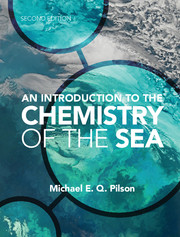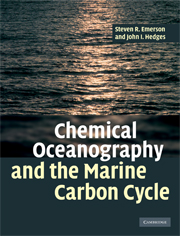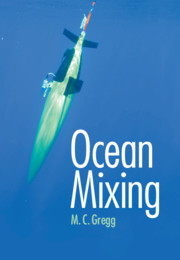Ocean Dynamics and the Carbon Cycle
This textbook for advanced undergraduate and graduate students presents a multidisciplinary approach to understanding ocean circulation and how it drives and controls marine biogeochemistry and biological productivity at a global scale. Background chapters on ocean physics, chemistry and biology provide students with the tools to examine the range of large-scale physical and dynamic phenomena that control the ocean carbon cycle and its interaction with the atmosphere. Throughout the text observational data is integrated with basic physical theory to address cutting-edge research questions in ocean biogeochemistry. Simple theoretical models, data plots and schematic illustrations summarise key results and connect the physical theory to real observations. Advanced mathematics is provided in boxes and appendices where it can be drawn on to assist with the worked examples and homework exercises available online. Further reading lists for each chapter and a comprehensive glossary provide students and instructors with a complete learning package.
- Integrates observational data with basic physical theory to address fundamental research questions in ocean dynamics and biogeochemistry
- Presents a modern, multidisciplinary approach with background chapters on ocean physics, chemistry and biology that provide students from a variety of disciplines with a solid platform of knowledge and skills
- Online resources, including additional exercises, solutions for instructors and model animations linked to illustrations in the book, supplement the book to create a complete learning package
Reviews & endorsements
"This is an outstanding book, likely to become a standard text for those needing to know about both ocean physics and biogeochemistry. Its main achievement is to cover both aspects in sufficient depth to provide a genuinely useful treatment of key concept, but at a sufficiently gentle technical and mathematical level to remain accessible to both communities. The excellent sets of problems (and solutions) will help readers to increase their understanding of the topics covered. I can see the book being widely adopted for upper-level undergraduate and graduate courses, as well as being used by more experienced researchers needing to increase their knowledge and understanding of the other discipline." - Professor David Marshall, University of Oxford
"For the last half century the study of ocean science has been fractured along disciplinary lines, but the contemporary challenge of understanding the ocean’s role in and response to climate variability has laid bare the weakness of studying aspects of the ocean in isolation. Here, by carefully interweaving the physical, biological and chemical fundamentals needed to understand the ocean’s circulation and carbon cycle, Williams and Follows have made the ocean whole again. As such, this text is ideal for students and instructors interested in a modern approach to the study of the oceans." - Professor Susan Lozier, Duke University
"This textbook presents a very thorough yet concise illustration of the current state of our understanding of the ocean's role in the global carbon cycle. It is excellent reading and provides a fresh approach that will be of immense value to future generations of students and new researchers. I congratulate the authors on this very fine work!" - Professor Andreas Oschlies, IFM-GEOMAR, University of Kiel
Product details
December 2011Adobe eBook Reader
9781139118408
0 pages
0kg
286 b/w illus. 16 colour illus. 15 tables 50 exercises
This ISBN is for an eBook version which is distributed on our behalf by a third party.
Table of Contents
- Preface
- List of symbols
- Part I. Introduction:
- 1. Why is the ocean important?
- 2. An introductory view of the ocean
- Part II. Fundamentals:
- 3. Transport fundamentals
- 4. Physics fundamentals
- 5. Fundamental biological processes
- 6. Carbonate chemistry fundamentals
- Part III. Physical Phenomena and their Biogeochemical Signals:
- 7. Seasonality of the upper ocean
- 8. Ocean gyres and intense currents
- 9. Ocean eddies
- 10. Ventilation
- 11. Cycling and transport of nutrients and carbon
- 12. The deep ocean and meridional overturning
- Part IV. Synthesis:
- 13. Integral frameworks
- 14. A forward view
- Appendix: mathematical definitions and momentum equations
- Glossary
- Answers
- References
- Index.








